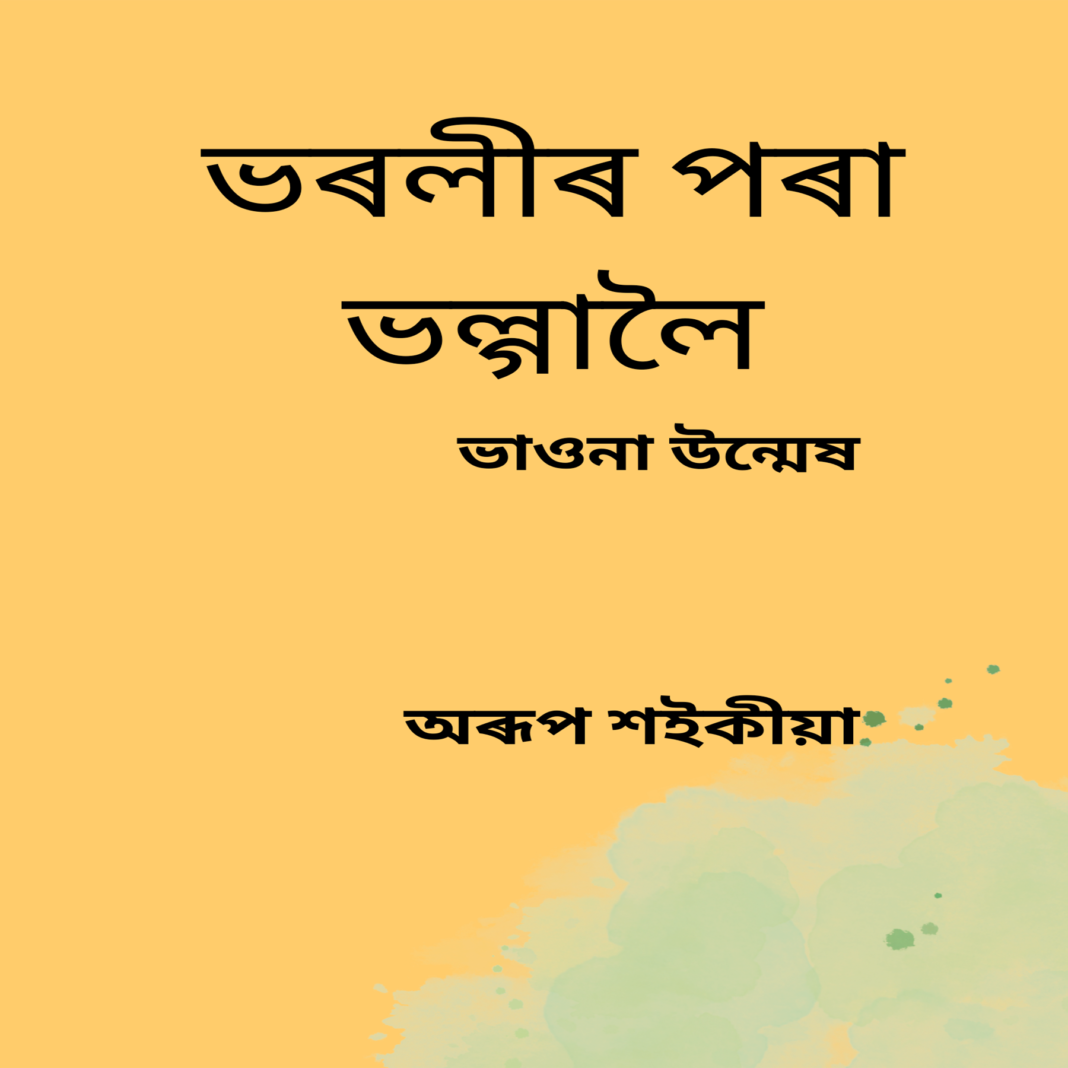By: Samiran Bhuyan
International Bhaona artist Arup Saikia presents his latest work, “Bharali to Volga” or “Bhorolir Pora Volgaloi,” encapsulating his journey through social and cultural landscapes, particularly his experiences in Bhaona performances.
Writer Arup Saikia endeavors to document the challenges and triumphs of an artist’s life, offering a collection of writings that delve into the intricacies of his craft. Introduced to the rich tapestry of Indian culture during his studies at the University of Delhi, Saikia’s narrative in “Bharali to Volga” unveils the trials and tribulations encountered on the path of “Bhaona Unmesh” (Budding of Bhaona).
Contrary to the convention of publishing such reflections post-retirement, Saikia chooses to engage with his audience while they are actively involved in public discourse, allowing for timely corrections and inspiration.
“Bharali to Volga” underscores the role of art and culture in protesting against injustices perpetrated by powerful adversaries. Saikia, a proponent of Sankari culture and poetry, has translated numerous plays from the traditional Brajavali language of Ankia Nat by Srimanta Sankardeva into English. As the first performer of Assamese traditional Bhaona in English, Saikia draws from his varied experiences to explore the essence of Assam’s national identity through a cultural lens.
The book encapsulates Saikia’s speeches on cultural performances and offers comparative insights into Sankari philosophy across different global contexts. Emphasizing the revolutionary spirit as inherent to an artist’s being, Saikia draws parallels between the ideals of Jyoti Prasad Aggarwal and the great Assamese saints Sankardev and Madhabdev.
Saikia envisions “Bharali to Volga” as a catalyst for revolutionary awakening, aiming to dispel societal darkness and promote Assamese culture worldwide in honor of Sankardeva. Through the metaphorical journey from Bharali to Volga, representing the local and intercontinental reach of Assamese traditional culture, Saikia champions a cultural revolution that empowers the oppressed and exploited.
The book chronicles Saikia’s struggles and resistance encountered on his path of cultural revolution, challenging fundamentalist ideologies and advocating for positive change through artistic expression. Saikia emerges as a champion of beauty and culture, urging fellow artists to join the struggle for emancipation from dogmatic beliefs.
In addition to cultural reflections, “Bharali to Volga” delves into extensive historical research, exploring the formation and development of the Assamese community and its assimilation into the pan-Bharat culture. The significance of the Varman dynasty and the influence of renowned scholar Late Kapila Vatsyayan serve as focal points in Saikia’s intellectual discourse.
While the sequence of chapters may pose challenges for casual readers, the interconnectedness of Saikia’s narrative is palpable to discerning minds. With 126 pages of insightful content, “Bharali to Volga” invites readers on a transformative journey through art, culture, and history. (The author is a writer, cultural activist and motivational speaker)







